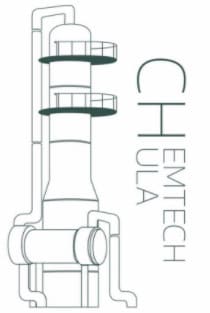ศาสตราจารย์ ดร. ศิริลักษณ์ พุ่มประดับ
Prof. Dr. Sirilux Poompradub
B. Sc. (Chem.), Chulalongkorn University, Thailand
M. Sc. (Chem.), Chulalongkorn University, Thailand
D. Eng. (Poly. Chem.), Kyoto University, Japan
E-mail : sirilux.p@chula.ac.th
Tel : (662) 218 7518
Research Interests
- Reinforcement of natural rubber by nanofiller
- In situ silica generated into natural rubber matrix by the sol-gel process
- Strain-induced crystallization in natural and synthetic rubbers
Two phenomena, which can explain the reinforcement effect in rubber vulcanizates, are the addition of reinforcing filler and the strain-induced crystallization. Rubber composites are physical mixtures of rubber (as the matrix) and reinforcing filler (as the dispersed phase) that serves to improve some mechanical property such as modulus, tensile strength or abrasion resistance. Fillers may be organic (e.g., carbon black) or inorganic (e.g., silica or calcium carbonate) compounds.
Crystallization is of great importance with regard to the mechanical properties of elastomers since the generated crystallites are thought to provide the reinforcement in the materials. Some elastomeric networks show a large and rather abrupt increase in the modulus at high elongation. This increase is very important since it corresponds to a significant toughening of the elastomer. It had been widely attributed to either the “limited extensibility” of network chains or to strain-induced crystallization. However, many of the synthetic rubbers, particularly those formed by the random co-polymerization of two different monomer units, such as SBR and NBR, do not have a regular sequence of chain atoms and hence are incapable of forming a crystal lattice. Such rubbers, after vulcanization, generally have much lower strength than NR vulcanizates, though from the practical standpoint this difference can be largely overcome by suitable compounding techniques, e.g. by the incorporation of reinforcing filler.
Also, silica generated in situ, the new composite material, is the most interesting nanofiller to study the effect of reinforcement. It is produced in the rubbery matrix by the sol-gel reaction. A typical reaction is base-hydrolysis and condensation reactions of tetraethoxysilane (TEOS) as a precursor of silica. The mechanism of sol-gel reaction is![]()
This reaction is concurrent and can be reversible depending on the reaction conditions such as pH, concentration, kind of catalysts, and temperature. This technique can produce the silica particles dispersed homogeneously in rubbery matrix both before and after curing.
Publications
Scopus Database: https://www.scopus.com/authid/detail.uri?authorId=6506044080
ResearchGate Database: https://www.researchgate.net/profile/Sirilux-Poompradub
Poompradub, S., Thirakulrati, M., Prasassarakich, P. In situ generated silica in natural rubber latex via the sol-gel technique and properties of the silica rubber composites (2014) Materials Chemistry and Physics, 144 (1-2), pp. 122-131.
Nuntang, S., Poompradub, S., Butnark, S., Yokoi, T., Tatsumi, T., Ngamcharussrivichai, C. Novel mesoporous composites based on natural rubber and hexagonal mesoporous silica: Synthesis and characterization (2014) Materials Chemistry and Physics, 143 (3), pp. 1199-1208.
Sittiphan, T., Prasassarakich, P., Poompradub, S. Styrene grafted natural rubber reinforced by in situ silica generated via sol-gel technique (2014) Materials Science and Engineering B: Solid-State Materials for Advanced Technology, 181 (1), pp. 39-45.
Klungsuwan, P., Jarerat, A., Poompradub, S. Mechanical Properties and Biodegradability of Cuttlebone/NR Composites (2013) Journal of Polymers and the Environment, 21 (3), pp. 766-779.
Suramanee, P., Poompradub, S., Rojanathanes, R., Thamyongkit, P. Effects of reaction parameters in catalysis of glycerol oxidation by citrate-stabilized gold nanoparticles (2011) Catalysis Letters, 141 (11), pp. 1677-1684.
Mahapram, S., Poompradub, S. Preparation of natural rubber (NR) latex/low density polyethylene (LDPE) blown film and its properties (2011) Polymer Testing, 30 (7), pp. 716-725.
Phadungphatthanakoon, S., Poompradub, S., Wanichwecharungruang, S.P. Increasing the thermal storage capacity of a phase change material by encapsulation: Preparation and application in natural rubber (2011) ACS Applied Materials and Interfaces, 3 (9), pp. 3691-3696.
Watcharakul, N., Poompradub, S., Prasassarakich, P. In situ silica reinforcement of methyl methacrylate grafted natural rubber by sol-gel process (2011) Journal of Sol-Gel Science and Technology, 58 (2), pp. 407-418.
Poompradub, S., Luthikaviboon, T., Linpoo, S., Rojanathanes, R., Prasassarakich, P. Improving oxidation stability and mechanical properties of natural rubber vulcanizates filled with calcium carbonate modified by gallic acid (2011) Polymer Bulletin, 66 (7), pp. 965-977.
Klungsuwan, P., Poompradub, S. Smart green composite: Effect of cuttlebone particle on the mechanical properties of NR vulcanizates (2011) Advanced Materials Research, 150-151, pp. 547-550.
Thaicharoen, P., Thamyongkit, P., Poompradub, S. Thiosalicylic acid as a devulcanizing agent for mechano-chemical devulcanization (2010) Korean Journal of Chemical Engineering, 27 (4), pp. 1177-1183.
Sittiphan, T., Prasassarakich, P., Poompradub, S. In situ silica filled styrene grafted natural rubber by the sol-gel process (2010) Advanced Materials Research, 93-94, pp. 525-528.
Chaichua, B., Prasassarakich, P., Poompradub, S. In situ silica reinforcement of natural rubber by sol-gel process via rubber solution (2009) Journal of Sol-Gel Science and Technology, 52 (2), pp. 219-227.
Poompradub, S., Ikeda, Y., Kokubo, Y., Shiono, T. Cuttlebone as reinforcing filler for natural rubber (2008) European Polymer Journal, 44 (12), pp. 4157-4164.
Poompradub, S., Chaichua, B., Kanchanaamporn, C., Boosalee, T., Prasassarakich, P. Synthesis of silica in natural rubber solution via sol-gel reaction (2008) KGK Kautschuk Gummi Kunststoffe, 61 (4), pp. 152-155.



